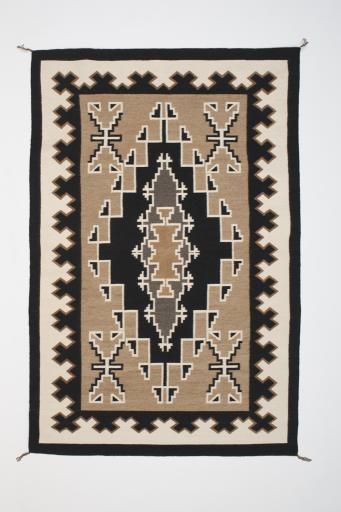Two Grey Hills rug, Julia Jumbo
Artwork Overview
Two Grey Hills rug,
circa 1959
Where object was made: New Mexico, United States
Material/technique: wool yarn; dyeing; weaving
Dimensions:
Object Length/Width (Length x Width): 144.5 x 96 cm
Object Length/Width (Length x Width): 37 13/16 x 56 7/8 in
Object Length/Width (Length x Width): 144.5 x 96 cm
Object Length/Width (Length x Width): 37 13/16 x 56 7/8 in
Credit line: Gift of David and Jean Francisco
Accession number: 2007.2766
Not on display
If you wish to reproduce this image, please submit an image request




